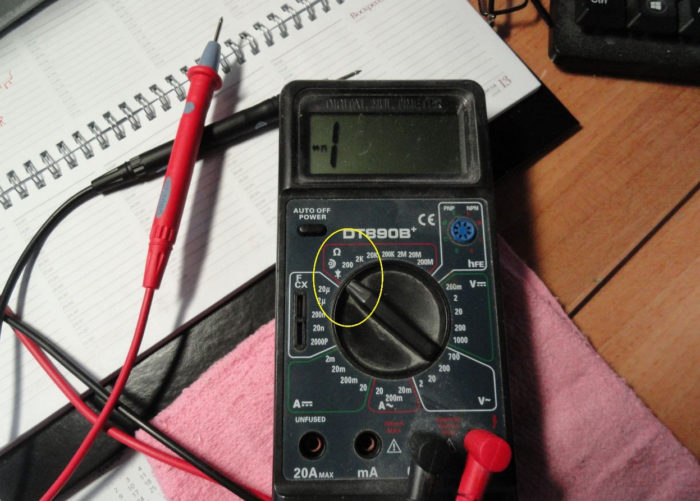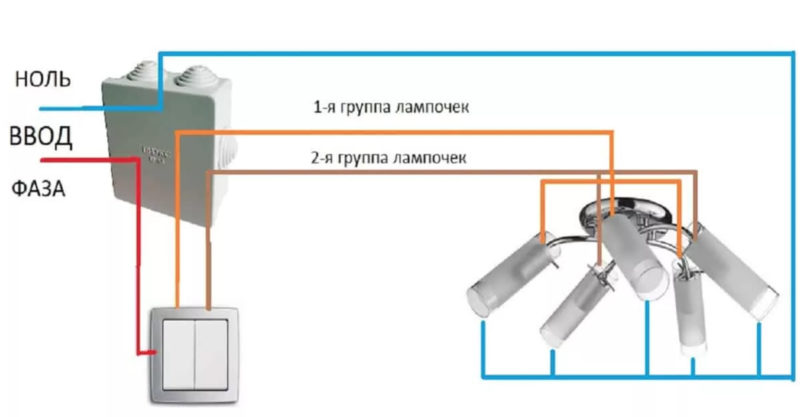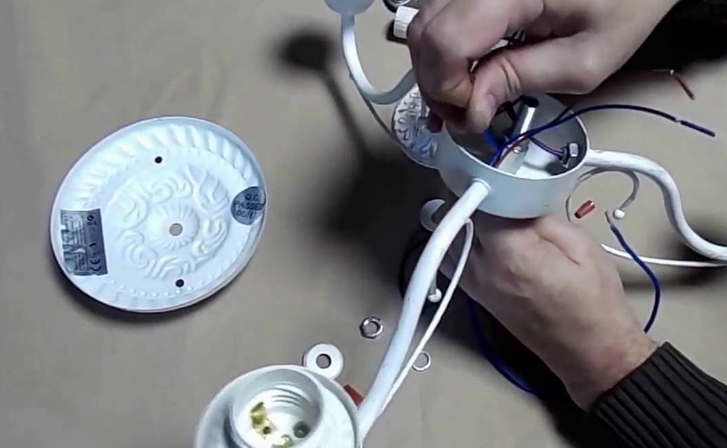How to connect a chandelier to a two-button switch
The switch with two keys has been popular since ancient times. With its help you can control two lighting fixtures from one point (e.g. turn on different lighting zones) or control the brightness level of one chandelier by switching a greater or lesser number of lamps. Connecting a chandelier to a double light switch is not difficult to do yourself, for this you need to understand a few things.
The device of the switch with two buttons

The two-button switch consists of two breaks in the circuit, controlled separately. Each switch is covered with a decorative key made of insulating material (plastic). There are three terminals for connecting the loads - a common terminal and two separate terminals. The common terminal is led to the phase wire, from the separate - two conductors to the loads. They can be connect them in parallel - There is another application of such a device, a non-standard one. In this case the switched current is doubled compared to the rated current. And the keys must be connected mechanically in an inconspicuous place, so that both channels are switched simultaneously. If you do not connect, you can switch the load with any key, but there will be no increase in the load capacity.
Important! When connecting switches in parallel to increase the load capacity, you must check whether the cross-section of the outgoing wire (or wires) is designed for the increased load.
There are two basic types of connection contacts for household switches - Screw terminals and plug-in terminals.. If a stranded wire is used for a screw connection, the stripped part of the wire must be tinned or terminated with crimp terminals.
In the same way as a single pushbutton device, a two-channel switch can have LED or halogen backlighting.
Connection steps
Work on the connection of the lamp to such a switching device consists of several stages. Each stage counts, creating its own contribution to the overall success. Therefore, the work must be done in sequence, without skipping any stage.
Wiring and marking
When the electrician gets to work, as a starting point, he has a hidden wiring - several wires going into the wall and several coming out of the ceiling. It is very important to know exactly which beginning of the wire corresponds to which end. This is necessary both in terms of the correct connection of the lamp, and in terms of the safety of the work.
Wires should be called, and if there is no colored insulation of conductors, make a mark. Ringing should be done even when the installation is done with colored wires - it is not certain that the ideas about the correctness of the laying by those who laid the wiring and those who connect the chandelier, coincide. To make a wiretap you need a multimeter and an auxiliary wire. It is wired for the duration of this work between the beginning and the end of the tested conductors.

One electrician is better to search for wires with an audible wire tester. Connecting the multimeter to one side, on the other side with an auxiliary wire look for the same conductor, waiting for the sound signal. Having found the matching sides, mark the wire and move on to the next one.

If an auxiliary wire cannot be run, there is another way. Several resistors with very different ratings will be needed. For example, 510 Ohm, 1 kOhm, 10 kOhm. They should be connected on the far side and measure the resistance from the opposite edge with a multimeter. According to the measured values make a picture of the location and make a marking.

Danger! The testing procedure has to be done only with the voltage disconnected! Turning off the light switch is not enough, you must open the circuit earlier - at the switchboard.
Wires grouping
Depending on the number of lamps in the chandelier, they are grouped differently. A two lamp chandelier has separate inputs for each lamp. This allows you to use a switch with two keys to get the combinations:
- chandelier off;
- the first lamp is on;
- the second lamp is on (they can be of different wattage or different color);
- two lamps on.
For a different number of lamps the combinations may be different. And the grouping of wires should be clearly imagined before starting the installation.
In a three-arm chandelier
A three-arm chandelier has one group of two lamps connected in parallel and a separate single element. They are connected in a circuit with a common wire to which the neutral conductor is connected. Each group of lamps has its own phase lead through which it can be energized independently of the others.
By combining the switching of the switch, you can get variants:
- lamp off;
- one lamp is on; two lamps are on;
- two lamps are on;
- all three lamps are on.

This way you can control the room illumination or create decorative illumination by combining different colored emitting elements.
In a five-arm chandelier
The five-arm chandelier is not particularly varied from the previous version. The possibilities of the two-way switch offer combinations similar to the previous variant:
- the chandelier completely off;
- two lamps on;
- three elements are switched on;
- the chandelier is fully switched on.

The only difference from the previous version is the number of lamps, which allows you to have brighter lighting. But it must be remembered that there is a rule that says that one lamp of 100 watts gives a greater luminous fluxthan two 50 watt bulbs. It applies not only to incandescent bulbs, but also to LED elements.
The video shows the connection of the wires in the chandelier
Selecting connection options

If the connection of the chandelier was planned at the stage of the overhaul of the room, the connection options are likely to have been thought out in advance. But in many cases you have to install a chandelier in a room with ready wiring. And here there may be different options - different number of wires can come out of the ceiling.
From the ceiling 2 wires

This situation is possible in older apartments. Of the two wires, one will be the phase wire, the other zero wire. There is no difficulty here. Just connect the two wires to the chandelier. But if the chandelier with separate groups of lamps, they will have to be connected in parallel. If the chandelier has a marking on the phase terminal and the zero terminal, you have to follow the connection scheme. For incandescent bulbs it does not matter, but if you have to replace a burned out "Ilich bulb" with an LED fixture, then here the violation of the phasing is critical. LED light bulb can blink or glow dimly when the circuit breaker is in the off position.
On the circuit breaker side you can connect the phase wire to one switching channel, or you can connect both breaks in parallel. In the first case you will have to manipulate one key. If the working channel fails during operation, the outgoing wire can be switched to the other terminal and operate the switch further.
Important! In this option, it is especially necessary to make sure that it is the phase wire that is switched, because in older rooms, the color coding of the wiring was not provided. This can be done by using screwdriver.
From the ceiling 3 wires
The case with three wires provides for two options.
In the first option in new houses, these are most likely the phase, common and ground wires, designated, respectively, by colors:
- red (brown) (on the terminal block - L);
- blue (on the N terminal block);
- yellow-green (PE).
In this case you must connect the wires according to the marking. If there is no terminal for the ground wire, then this product is safety class 0 (zero), and the yellow-green wire does not need to be connected anywhere.

Important! If the luminaire is of protection class I protection class and a terminal to connect the grounding conductor, leaving the ground wire unconnected is categorically forbidden! Such a chandelier will work, but in terms of protection against electric shock will have a serious flaw. Safe operation of such a device is provided by the presence of the connection to the ground. So you can not operate such a chandelier in systems without grounding!
The second variant is found in old houses. To the lamp from the switch goes zero wire and two phase wires. Here you can connect a chandelier of protection class 0. The neutral wire to the neutral terminal, the two phase wires to the different lamp groups.

From the ceiling 4 wires
This option is the best in terms of functionality and connection security. It has:
- A neutral conductor;
- Two phase wires to connect two groups of lamps;
- protective grounding wire.
The chandelier is connected according to the marking of the terminal block.

How to convert a chandelier designed for a single switch
If the chandelier contains two or more lamps, but is designed to work with a single switching element, you can try to remake the chandelier connection to two separate switches. The process is easier to consider on the example of a chandelier with three elements.

Initially, the circuit looks like this:
- three lamps are included in parallel;
- a terminal of two terminals.
The PE conductor and the terminal for it are not shown for simplicity, but must be kept in mind. The rewiring should be done in this sequence:
- Find the connection point for the phase conductors.
- Disconnect one lamp from the assembly.Disconnect one lamp.
- Replace the terminal with a four-terminal (one terminal for the ground wire).Replacing the terminal block.
- Lay an extra conductor and connect it to the extra terminal.The final diagram of the chandelier.
The maximum permissible load for a wire with a copper core at a supply voltage of 220 V is given in the table.
| Cross section of wire, sq.mm. | 0,5 | 0,75 | 1 | 1,5 |
| Permissible load, W | 2400 | 3300 | 3700 | 5000 |
It is obvious that a wire with a cross section of 0.5 sq. mm is enough for most of the loads that may be encountered in a chandelier with an incandescent lamp, and for any reasonable number of LED elements. Therefore, there is no reason to choose a conductor with a larger cross section.

For example, a three-arm chandelier is shown with the connection node located in the place indicated by the green dotted circle. The routing of the additional wire is indicated by the red dotted line. It is placed in the same tube as the main conductor.
The success of the event depends on two factors:
- The availability of a connection point for the phase conductors;
- availability of space for laying an additional conductor of the required cross-section.
In the conclusion of the video: a master class on how to connect a light fixture to a double switch.
If everything turned out well, then the connection of a two-button switch to the converted chandelier according to the above techniques will not cause difficulties.



